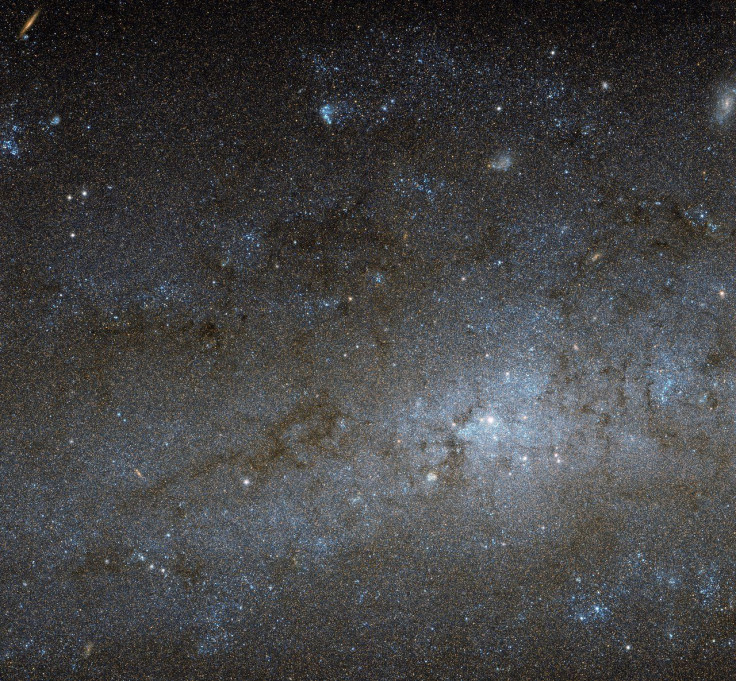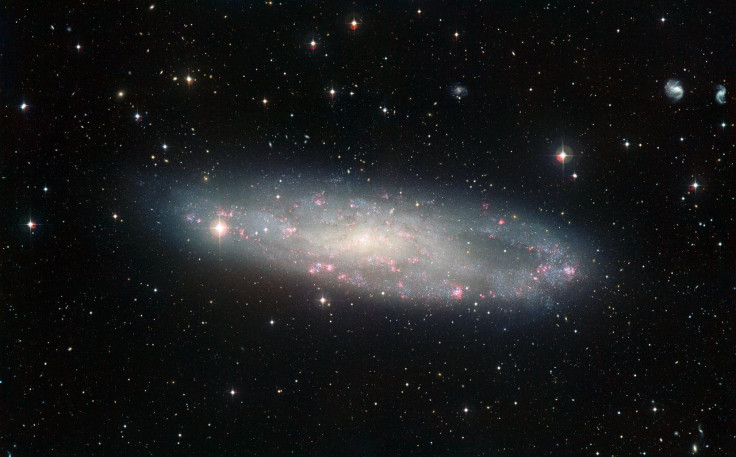NGC 247: Hubble Spies Distant Spiral Galaxy With A Massive Void

Using the Hubble Space Telescope, astronomers have photographed the central region of NGC 247 — a spiral galaxy located approximately 11 million light-years from Earth in the direction of the southern constellation of Cetus. NGC 247 is one of the man galaxies that form the Sculptor Group — a group of galaxies associated with the Sculptor galaxy NGC 253.
In the Hubble image, NGC 247’s nucleus can be seen as a bright patch surrounded by a mixture of stars, gas and dust. The dust forms dark patches, while the gas, mostly scattered throughout the galaxy’s arms and fringes, is visible as bright knots called H II regions — so called because of they are rich in ionized hydrogen atoms.
“This galaxy displays one particularly unusual and mysterious feature. ... The northern part of NGC 247’s disc hosts an apparent void, a gap in the usual swarm of stars and H II regions that spans almost a third of the galaxy’s total length,” the European Space Agency said in a statement accompanying the picture.
Although this void, located on one side of the galaxy’s spiral disk, is not visible in the Hubble photograph, it can be clearly seen in an earlier image captured using the European Southern Observatory’s MPG/ESO 2.2-meter telescope at the La Silla Observatory in Chile.

The stars present in this void are “significantly” older than the ones outside it. This indicates that that the birth of stars in this region has, for some reason, slowed down, and has not taken place for a billion years or so.
“Although astronomers are still unsure how the void formed, recent studies suggest it might have been caused by gravitational interactions with part of another galaxy,” the ESA said.
The Hubble Space Telescope was launched aboard NASA’s space shuttle Discovery on April 24, 1990. Since then, it has not only captured an unimaginable number of truly spectacular nebulae and galaxies, it has also peered back over 13 billion years to look at our cosmos in its infancy, giving us, as NASA aptly put in an earlier statement, “a front row seat to the awe inspiring universe we live in.”
© Copyright IBTimes 2025. All rights reserved.






















